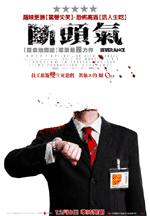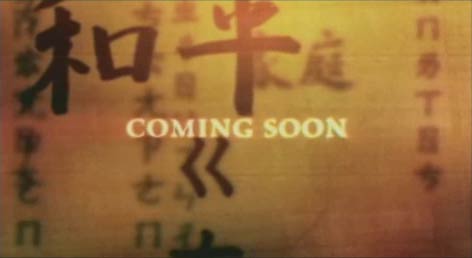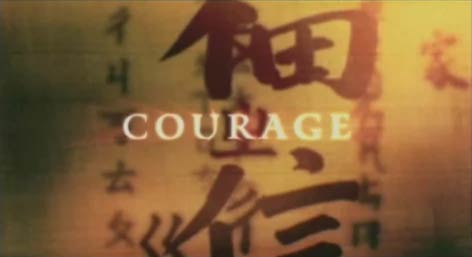I’m so far behind on posts that when Taffy of Tailingua sent this to me people in Taipei probably really were wearing short sleeves. They’re certainly not wearing so little now, with the cold, damp, miserable weather we’ve been having lately. Oh well, at least it’s better than what so many people have been having to endure in China. I hope Pinyin News readers there are keeping warm and didn’t get stuck in some transportation-related hell.

This poster on the back of a bus is for Taiwan’s presidential campaign.
It reads:
Táiwān ei lìliang
Shìjiè dǎ tōngguānMǎ Yīngjiǔ — Xiāo Wàncháng
.
台灣ㄟ力量
世界打通關
馬英九 蕭萬長
It’s hard to put this into English that makes sense. Perhaps “Taiwan shows its power to the world.” The idea is something like “Taiwan can overcome all obstacles.” It doesn’t strike me as a good slogan. But maybe I’m missing something.
The interesting part is that it has Taiwanese written with zhuyin (bopomofo): ㄟ (ei). But the ㄟ is basically just for show, since it doesn’t serve any linguistic purpose that the expected Chinese character — 的 (de), indicating the possessive — wouldn’t provide. The sign is still in Mandarin. (Dǎ tōngguān, for example, is not a Taiwanese expression, according to several native speakers I questioned about this.)
For those who don’t know, Mǎ Yīngjiǔ and Xiāo Wàncháng comprise the KMT’s ticket for next month’s presidential election.
Both Ma and Xiao use unusual spellings for the way they write their names in the Roman alphabet: Ma Ying-jeou and Vincent Siew, respectively.
The “Ying-jeou” of Ma’s name gives the appearance of Gwoyeu Romatzyh. But in that system his name would be “Maa Ing-jeou.”
“Siew” for Hanyu Pinyin’s Xiāo indicates that the source is likely a language other than Mandarin. But Taiwanese isn’t it, though Siew, unlike Ma, was born here. Because of that spelling, many foreigners in Taiwan pronounce his family name like the English word “shoe.” “Vincent” is of course an “English name” rather than a romanization of his birth name.
As I’m fond of pointing out, perhaps the only prominent Taiwan politician whose name is recognizably Hanyu Pinyin and only Hanyu Pinyin is President Chen Shui-bian, the man most responsible for seeing that Taiwan did not adopt Hanyu Pinyin during his tenure.

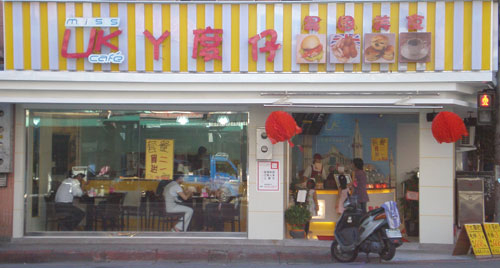
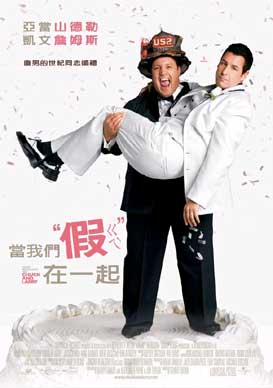 A movie currently doing well at the box office in both the United States and Taiwan is I Now Pronounce You Chuck and Larry. In Taiwan, the film has been given the linguistically interesting title
A movie currently doing well at the box office in both the United States and Taiwan is I Now Pronounce You Chuck and Larry. In Taiwan, the film has been given the linguistically interesting title 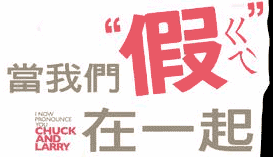 Getting back to the Taiwanese title, “
Getting back to the Taiwanese title, “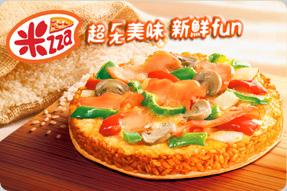 Something written with three different scripts (Chinese characters, zhuyin, and the roman alphabet) is very much the sort of thing that attracts my attention, as is a product that mixes scripts in its name. So this ad for a new product from Taiwan’s Pizza Hut definitely caught my eye, though it did not inspire me to actually taste the item being touted, which is a rice pizza. (Generally, I do not care for pizzas with Taiwanese characteristics, such as those with peas, corn, or squid. For that matter, I don’t even like pineapple on pizza.)
Something written with three different scripts (Chinese characters, zhuyin, and the roman alphabet) is very much the sort of thing that attracts my attention, as is a product that mixes scripts in its name. So this ad for a new product from Taiwan’s Pizza Hut definitely caught my eye, though it did not inspire me to actually taste the item being touted, which is a rice pizza. (Generally, I do not care for pizzas with Taiwanese characteristics, such as those with peas, corn, or squid. For that matter, I don’t even like pineapple on pizza.)